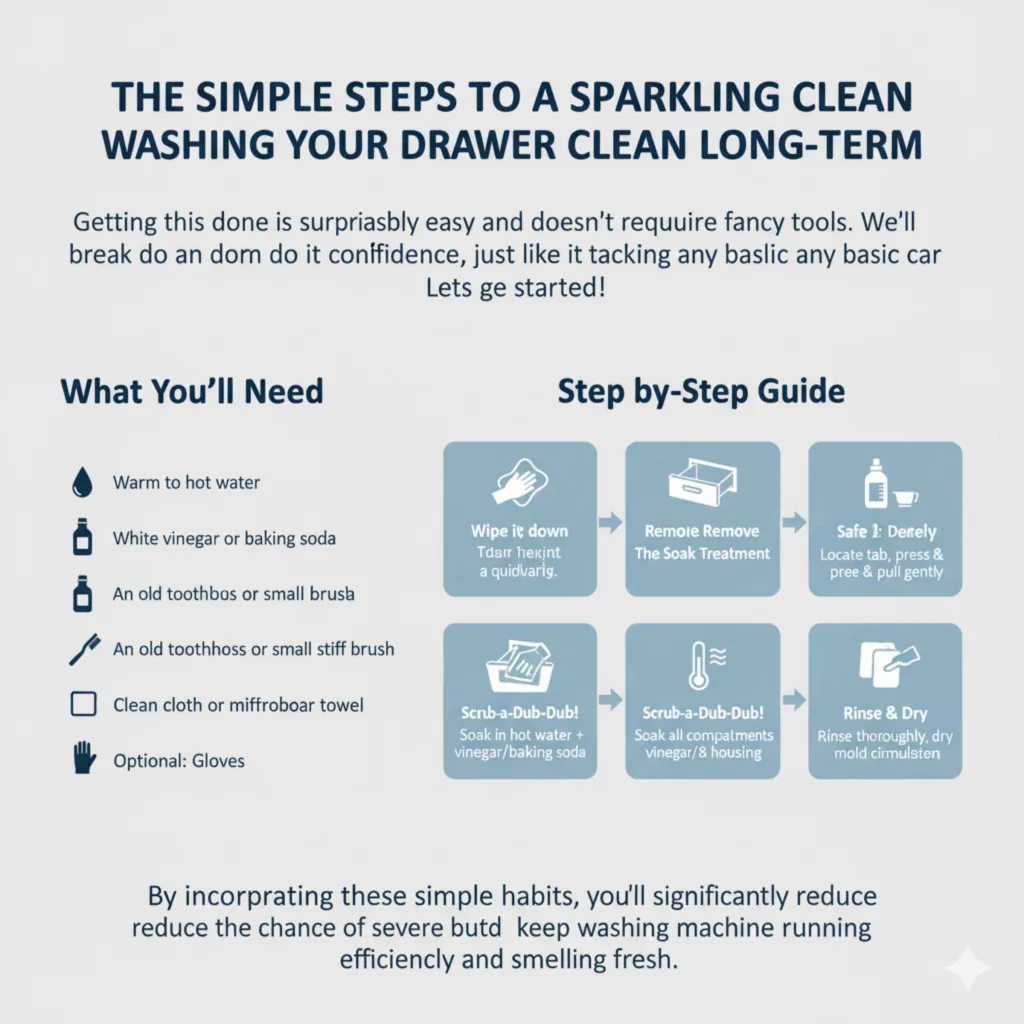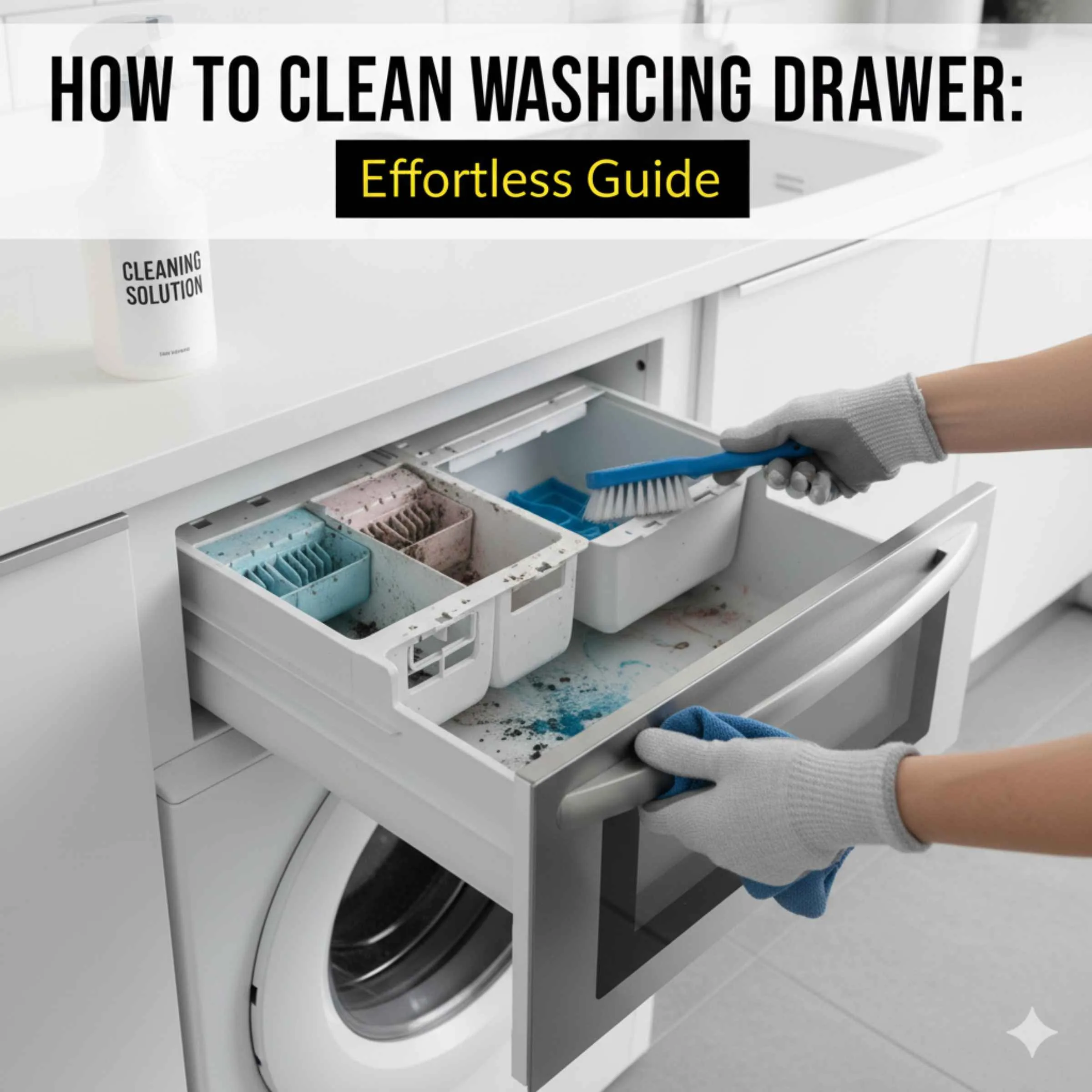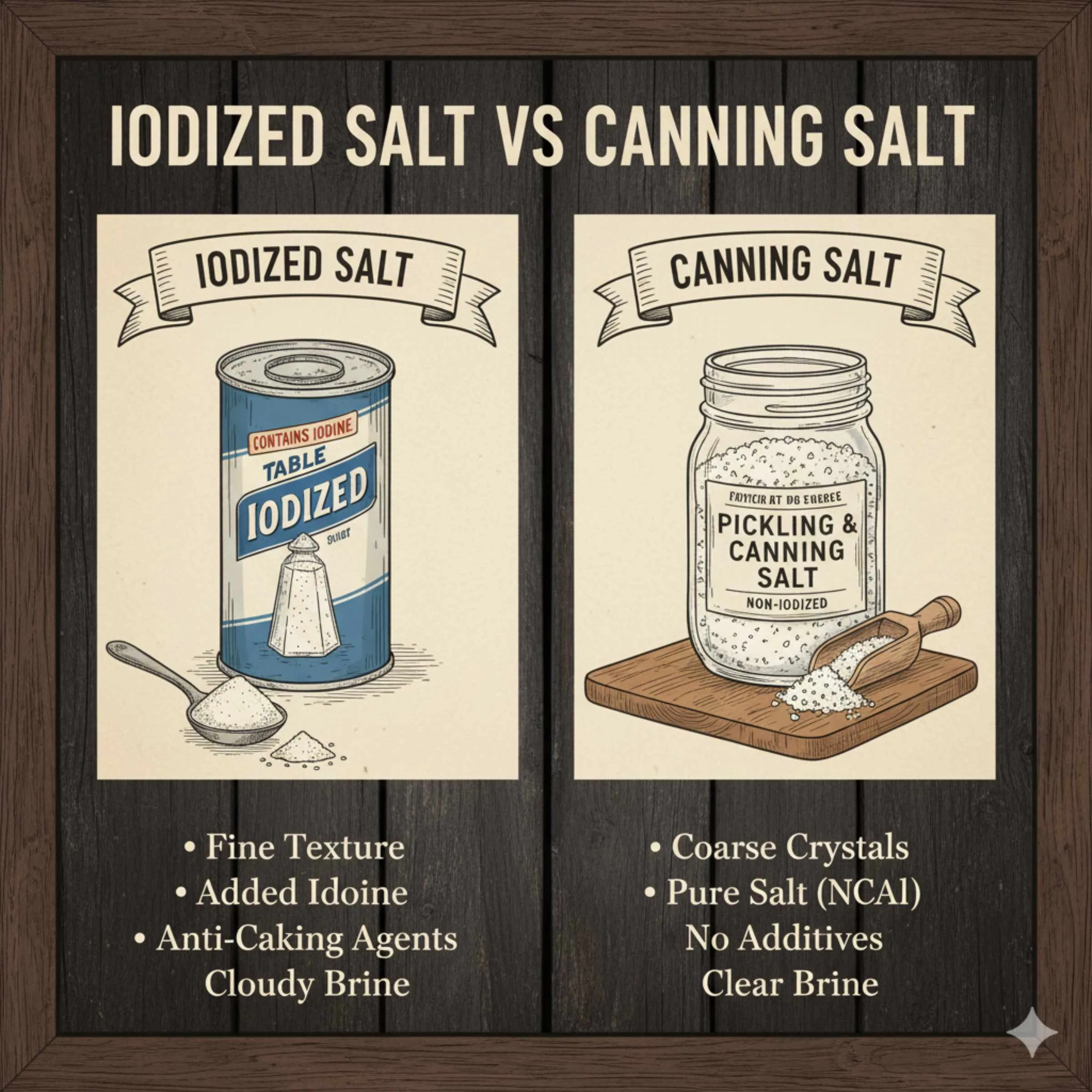Quick Summary:
Cleaning your washing machine drawer is simple and vital for fresh laundry. Remove it, soak it in hot water with vinegar or baking soda, scrub away buildup, and rinse thoroughly. This quick clean prevents mold and ensures your clothes come out smelling great.
Hey everyone, Dustin Hall here! Ever notice a funky smell coming from your laundry, even after a wash? Or see little bits of gunk or residue around your washing machine’s detergent drawer? It’s a common problem, and honestly, it can be a bit frustrating. That little drawer, where all the detergent and softener goes, can become a breeding ground for mold, mildew, and all sorts of unpleasant gunk if we don’t give it a little TLC now and then. But don’t worry! It’s not a difficult fix at all. In this guide, we’ll walk through, step-by-step, how to clean your washing machine drawer effortlessly. You’ll be amazed at how much cleaner your clothes will be, and your machine will thank you for it!
Why Cleaning Your Washing Machine Drawer Matters More Than You Think
Think of that little detergent drawer as the gateway to your washing machine’s cleaning power. If it’s clogged with old detergent, fabric softener residue, and even mold, it can’t dispense properly. This means your clothes might not get the full dose of detergent, leading to less-than-clean laundry. Worse, that gunk can actually transfer bacteria or mold spores back onto your clothes, creating that stale smell we’re trying to avoid.
Regular cleaning isn’t just about aesthetics; it’s about maintaining the efficiency and hygiene of your appliance. A clean drawer ensures your detergent and softener reach the drum effectively, and it prevents potential clogs and damages down the line. Plus, who doesn’t want their laundry to smell genuinely fresh, not just maskable by a bit of fragrance?
The Simple Steps to a Sparkling Clean Washing Machine Drawer
Getting this done is surprisingly easy and doesn’t require any fancy tools. We’ll break it down so you can do it with confidence, just like tackling any basic car maintenance. Let’s get started!
What You’ll Need
Before we dive in, gather these simple items. You likely have most of them around the house already:
- Warm to hot water
- White vinegar or baking soda (a natural cleaner miracle!)
- An old toothbrush or a small, stiff brush
- A clean cloth or microfiber towel
- Optional: Gloves (if you prefer not to get your hands dirty)
- Optional: A small rag or paper towels for drying
Step 1: Safely Remove the Drawer
This is the first and most crucial step. Most washing machine drawers are designed to be removed for cleaning. The exact method can vary slightly between different brands and models, but here’s the general idea:
- Locate the Drawer: It’s usually at the top-front of your machine, clearly marked with compartments for detergent, softener, and sometimes bleach.
- Gently Pull: Pull the drawer out as far as it will comfortably go. You’ll likely feel a point where it stops.
- Look for a release mechanism: On most modern machines, there’s a tab, button, or lever you need to press or push as you pull the drawer the rest of the way out. This is usually located on the right-hand side of the drawer housing, but check your machine’s manual if you’re unsure. You can often find digital copies of washing machine manuals online by searching for your model number. For example, a quick search for “Samsung washing machine drawer release” can yield helpful diagrams.
- Be Gentle: Don’t force it. If it feels stuck, double-check for that release tab or consult your appliance’s user manual. Forcing it could break the mechanism.
Step 2: The Soak Treatment
Once the drawer is out, it’s time to tackle that buildup. For stubborn residue and mold, a good soak is key. This is where our cleaning heroes, vinegar and baking soda, come in.
- Option A: Vinegar Soak
- Fill your sink or a basin with hot water.
- Add about 1-2 cups of white vinegar to the water.
- Submerge the drawer in the vinegar-water solution.
- Let it soak for at least 30 minutes to an hour. For really tough grime, you can leave it for a few hours or even overnight.
- Option B: Baking Soda Paste (for targeted areas)
- If you don’t have vinegar on hand or prefer baking soda, you can make a paste.
- Mix a few tablespoons of baking soda with a small amount of water to create a thick paste.
- Apply this paste directly to any particularly grimy or moldy areas on the drawer.
- Let it sit for about 30 minutes.
Vinegar is excellent at breaking down detergent scum and killing mold and mildew thanks to its acidic properties. Baking soda is a fantastic deodorizer and gentle abrasive, perfect for scrubbing away residue without scratching.
Step 3: Scrub-a-Dub-Dub!
After the soak, it’s time for some hands-on scrubbing. This is where the old toothbrush or small stiff brush becomes your best friend.
- Drain the water: If you used the soak method, empty the dirty water from your sink or basin.
- Scrub all compartments: Use your brush to get into every nook and cranny of the drawer. Pay close attention to the edges, the areas where the detergent and softener pour out, and any dividers within the compartments. Mold and residue love to hide in these tight spots.
- Rinse as you go: Rinse the drawer under running water frequently to wash away loosened gunk and to see if you’ve missed any spots.
- For baking soda paste: If you used the paste, gently scrub the treated areas with your brush. The paste will help lift the grime.
Don’t forget the housing! While the drawer is out, take a look at the cavity where the drawer sits. You might find some built-up residue or mold in there too. Use your damp cloth or brush to clean this area as well. A quick wipe down here can make a big difference. You can refer to resources like the EPA’s guidance on simpler ways to clean your home for general eco-friendly cleaning tips that apply here too.
Step 4: Thorough Rinsing and Drying
This is a simple but essential step to ensure all cleaning agents, residue, and loosened gunk are completely removed.
- Rinse well: Rinse the drawer under clean, running water for a minute or two. Make sure every bit of vinegar or baking soda residue is gone.
- Inspect: Give the drawer a final once-over. If you still see any stubborn spots, give them another quick scrub.
- Dry completely: Use a clean cloth or microfiber towel to dry the drawer thoroughly. This is important to prevent new mold or mildew growth. Pay attention to crevices and ensure all water is removed before reinserting it.
Step 5: Reinsert the Drawer
With the drawer sparkling clean and completely dry, it’s time to put it back into the machine.
- Align the drawer: Line up the drawer with its housing.
- Slide it in: Gently push the drawer back into the machine until it clicks or slides smoothly into place. Make sure it’s fully seated and operates smoothly when you open and close it.
And that’s it! You’ve successfully cleaned your washing machine drawer. See? Effortless!

Dealing with Different Types of Drawer Buildup
While the basic cleaning process is the same, sometimes you encounter specific issues. Here’s how to handle them.
Stubborn Detergent Scum
This is the most common culprit. It’s usually a white, chalky buildup. Here’s what helps:
- Vinegar is your best friend: A longer soak in warm water and vinegar is usually enough to loosen it.
- Gentle scraping: If some parts are really caked on, you might need to gently scrape with a plastic scraper or an old credit card before scrubbing. Be careful not to scratch the plastic.
- Boiling water (use with caution): For extreme cases, carefully pouring boiling water over the drawer (in a sink or tub) can help melt stubborn soap scum. Let it cool before scrubbing.
Mold and Mildew Growth
This usually appears as black or dark green patches and can smell musty.
- Vinegar is key: Its anti-fungal properties are great for killing mold. A strong vinegar soak is essential.
- Bleach (as a last resort): If vinegar doesn’t cut it, and your machine manual allows, you can use a dilute bleach solution. Mix 1 part bleach with 10 parts water. Apply this with a cloth or brush to the affected areas, scrub, and then rinse extremely thoroughly. Never mix bleach and vinegar, as this creates toxic chlorine gas. Ensure the area is well-ventilated. For most homes, sticking to vinegar is safer and effective.
- Scrubbing is critical: Mold can embed itself, so thorough scrubbing is non-negotiable.
Discoloration from Fabric Softener
Sometimes fabric softener can leave a sticky, brownish residue.
- Hot water and dish soap: Start with a hot water soak and a bit of dish soap; it’s good at cutting grease and sticky residues.
- Baking soda paste: A baking soda paste can also help lift this type of residue.
- Vinegar: If the dish soap doesn’t fully do the trick, follow up with a vinegar soak.
Preventative Maintenance: Keeping Your Drawer Clean Long-Term
The best way to deal with a dirty washing machine drawer is to prevent it from getting too dirty in the first place! Here are some easy tips:
- Wipe it down regularly: Once a week, or even after a large load of laundry, give the drawer and its cavity a quick wipe with a damp cloth. This takes less than a minute!
- Remove the drawer periodically: Aim to remove and clean the drawer thoroughly once a month. This consistent maintenance is far easier than tackling a heavily soiled drawer.
- Don’t overfill the compartments: Using too much detergent or softener can lead to excess residue that doesn’t get fully rinsed away. Always follow the manufacturer’s recommendations for your detergent and machine.
- Use Liquid Detergent When Possible: Liquid detergents tend to dissolve more easily and leave less residue than powders, especially in colder wash cycles.
- Run Hot Water Cycles: Occasionally run a hot water wash cycle (even without clothes) to help flush out any detergent build-up. Many machines have a specific ‘self-clean’ or ‘drum clean’ cycle for this purpose.
- Leave the Door Ajar: After a wash cycle, leave the washing machine door slightly open, along with the detergent drawer, to allow air circulation. This is a great tip in general for preventing mold and mildew inside your machine, as recommended by appliance manufacturers.
By incorporating these simple habits, you’ll significantly reduce the chance of severe buildup and keep your washing machine running efficiently and smelling fresh.

Comparison: Cleaning Methods
Let’s look at how different cleaning agents stack up:
| Cleaning Agent | Pros | Cons | Best For |
|---|---|---|---|
| White Vinegar | Effective against mold and mildew, natural, deodorizes, affordable | Strong smell (temporary), can be diluted too much | General cleaning, mold, soap scum |
| Baking Soda | Gentle abrasive, deodorizes, good for scrubbing | Less effective against heavy mold than vinegar | Scrubbing residue, light cleaning, odor removal |
| Dish Soap | Cuts grease and sticky residue, readily available | Less effective on mold, can cause suds in the machine if not rinsed well | Sticky softener residue |
| Bleach (Diluted) | Very effective disinfectant, kills mold and bacteria | Harsh, can damage plastic over time, creates toxic fumes if mixed with other cleaners, requires abundant rinsing, may void warranty if used improperly | Severe mold/mildew (use with extreme caution and as a last resort, after checking manual) |
For regular, safe, and effective cleaning, white vinegar and baking soda are your go-to options. They are powerful enough for most common issues and much safer for you and your machine than harsher chemicals.
Frequently Asked Questions (FAQs)
Got more questions? We’ve got answers!
Q1: How often should I clean my washing machine drawer?
A1: For best results, aim for a thorough cleaning once a month. A quick wipe-down weekly or after heavy use can also help prevent buildup.
Q2: Can I leave the drawer in the machine to clean it?
A2: While you can wipe out the housing, it’s very difficult to clean the drawer effectively without removing it. Removing it allows for a deep soak and thorough scrubbing of all its parts.
Q3: My drawer is really stuck. What should I do?
A3: Most drawers have a release tab or button you need to press while pulling. Check your washing machine’s manual for specific instructions on how to remove your model’s drawer. Never force it, as you could break the release mechanism.
Q4: Is it safe to soak the drawer in vinegar overnight?
A4: Yes, soaking the drawer in a vinegar-water solution for several hours or overnight is generally safe and can be very effective for loosening tough grime and mold.
Q5: What if I don’t have white vinegar?
A5: You can use baking soda paste or a solution of warm water and a good quality dish soap as alternatives. For mold, however, vinegar is the most recommended natural cleaner.
Q6: Can I use bleach to clean the drawer?
A6: As a last resort for severe mold, a very dilute bleach solution (1 part bleach to 10 parts water) can be used, but only if your machine’s manual permits it. Always rinse extremely thoroughly. It’s generally safer and just as effective for most situations to use vinegar or baking soda. Never mix bleach with vinegar or ammonia.
Q7: My clothes still smell musty after washing. Could it be the drawer?
A7: Yes, a dirty detergent drawer is a common cause of musty-smelling laundry because it can harbor mold and bacteria. Cleaning the drawer, along with running a machine cleaning cycle, is a good first step to address this issue.
Conclusion
Taking care of your washing machine drawer might seem like a small task, but it’s one that can make a big difference in the freshness and cleanliness of your laundry, not to mention the lifespan of your appliance. By following these simple, step-by-step instructions, you can easily banish mold, mildew, and detergent buildup. Remember, a little regular maintenance goes a long way!
So, grab that old toothbrush, a bit of vinegar, and give your washing machine drawer the attention it deserves. You’ll be rewarded with cleaner clothes and the satisfaction of knowing you can handle this simple maintenance task like a pro. Keep up these good habits, and your laundry will thank you for it!








Leave a Reply